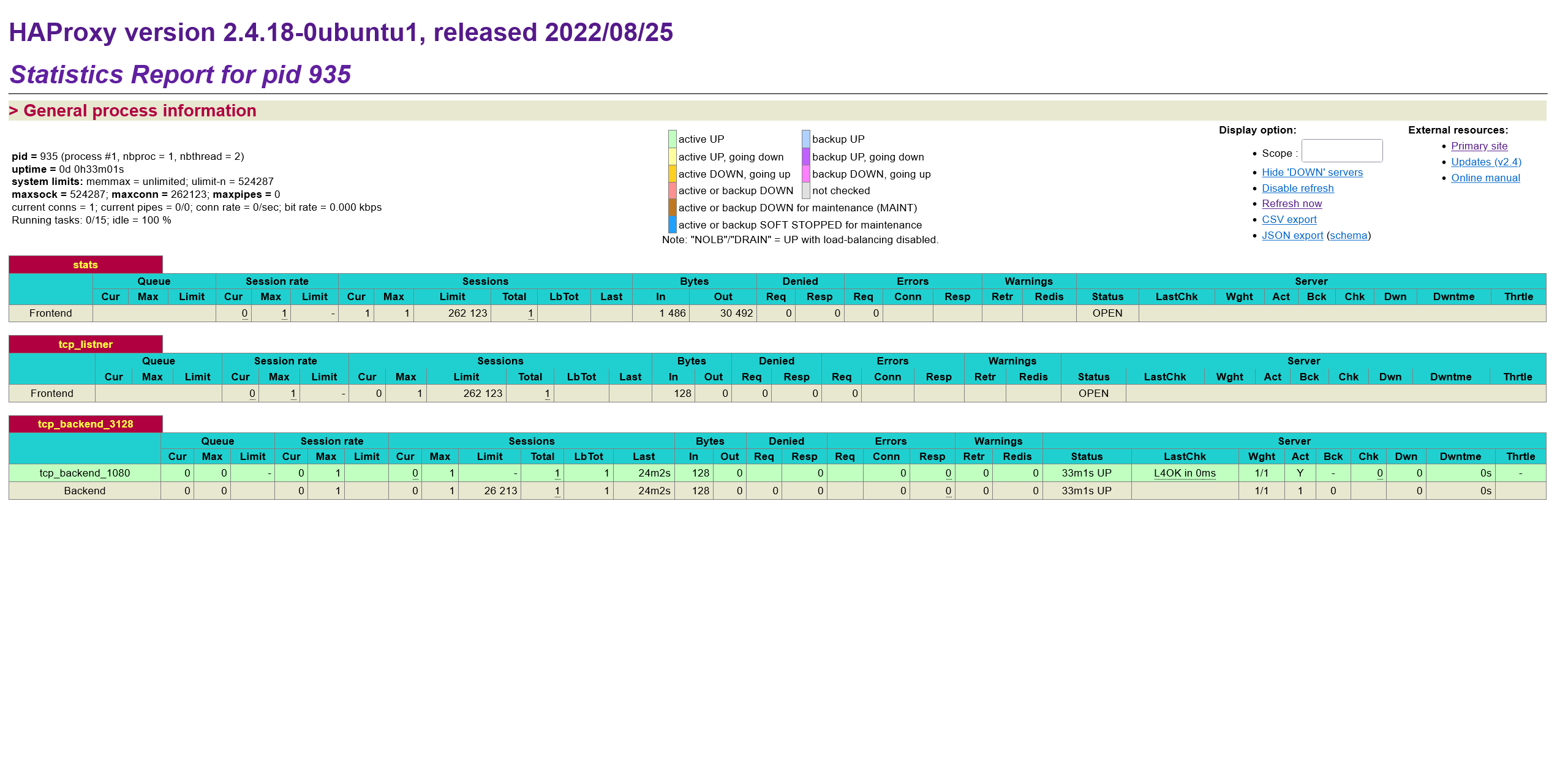How To Setup HAProxy as a Load Balancer on Ubuntu 20.04
21/01/2023
Information
HAProxy is a free, very fast and reliable reverse-proxy offering high availability, load balancing, and proxying for TCP and HTTP-based applications. It is particularly suited for very high traffic web sites and powers a significant portion of the world's most visited ones.
Over the years it has become the de-facto standard opensource load balancer, is now shipped with most mainstream Linux distributions, and is often deployed by default in cloud platforms
Step 1 - Update the system
Firstly update your system, on Debian you can use the below command.
sudo apt-get update && sudo apt upgrade -y
Step 2 - Installing HAProxy
Install HAProxy using apt-get
sudo apt install haproxy
systemctl status haproxy
● haproxy.service - HAProxy Load Balancer
Loaded: loaded (/lib/systemd/system/haproxy.service; enabled; vendor preset: enabled)
Active: active (running) since Sat 2023-01-21 06:03:21 GMT; 6s ago
Docs: man:haproxy(1)
Step 2 - Configuring HAProxy for Load Balancing
We'll start by removing the default configuration file, this can normally be found at /etc/haproxy/haproxy.cfg
sudo rm /etc/haproxy/haproxy.cfg
sudo nano /etc/haproxy/haproxy.cfg
defaults
retries 3
option redispatch
timeout client 30s
timeout connect 4s
timeout server 30s
frontend tcp_listner
bind *:3128
mode tcp
default_backend tcp_backend_3128
backend tcp_backend_3128
balance roundrobin
mode tcp
server infra-node1 10.0.0.1:1080 check
server infra-node2 10.0.0.2:1080 check
infra-node1 & infra-node1 on IP's 10.0.0.1 & 10.0.0.2 using a roundrobin algorithm Load Balancing Algorithms
The load balancing algorithm that is used determines which server, in a backend, will be selected when load balancing. HAProxy offers several options for algorithms. In addition to the load balancing algorithm, servers can be assigned a weight parameter to manipulate how frequently the server is selected, compared to other servers.
You can explore the different types of load balancing algorithms here
roundrobin
roundrobin this selects servers in turns. This is the default algorithm.
source
source this selects which server to use based on a hash of the source IP address that users are making requests from. This method ensures that the same users will connect to the same servers.
leastconn
leastconn selects the server with the least number of connections. This is recommended for longer sessions. Servers in the same backend are also rotated in a round-robin fashion.
You can now restart the HAProxy service & test your connection.
sudo systemctl restart haproxy
sudo systemctl status haproxy
● haproxy.service - HAProxy Load Balancer
Loaded: loaded (/lib/systemd/system/haproxy.service; enabled; vendor preset: enabled)
Active: active (running) since Sat 2023-01-21 05:52:32 UTC; 23min ago
Docs: man:haproxy(1)
file:/usr/share/doc/haproxy/configuration.txt.gz
Process: 863 ExecStartPre=/usr/sbin/haproxy -Ws -f $CONFIG -c -q $EXTRAOPTS (code=exited, status=0/SUCCESS)
Main PID: 888 (haproxy)
Tasks: 3 (limit: 1076)
Memory: 72.4M
CPU: 670ms
CGroup: /system.slice/haproxy.service
├─888 /usr/sbin/haproxy -Ws -f /etc/haproxy/haproxy.cfg -p /run/haproxy.pid -S /run/haproxy-master.sock
└─935 /usr/sbin/haproxy -Ws -f /etc/haproxy/haproxy.cfg -p /run/haproxy.pid -S /run/haproxy-master.sock
Jan 21 05:52:30 vps systemd[1]: Starting HAProxy Load Balancer...
Jan 21 05:52:32 vps haproxy[888]: [NOTICE] (888) : New worker #1 (935) forked
Jan 21 05:52:32 vps systemd[1]: Started HAProxy Load Balancer.
(Optional) Step 3 - Adding a Stats Page
If you want, you can add a basic stats page to monitor your incoming & outgoing connections through the HAProxy server.

Edit your HAProxy configuration file again:
sudo nano /etc/haproxy/haproxy.cfg
defaults section & above the frontend tcp_listener frontend stats
bind *:8404 #(1)!
mode http
stats enable
stats uri /
stats refresh 10s
- Set this to whatever port you'd like to use for your frontend stats page.
Your configuration should look something like this:
defaults
retries 3
option redispatch
timeout client 30s
timeout connect 4s
timeout server 30s
frontend stats
bind *:8404
mode http
stats enable
stats uri /
stats refresh 10s
frontend tcp_listner
bind *:3128
mode tcp
default_backend tcp_backend_3128
backend tcp_backend_3128
balance roundrobin
mode tcp
server infra-node1 10.0.0.1:1080 check
server infra-node2 10.0.0.2:1080 check
sudo systemctl restart haproxy
8404 as specified in the configuration. http://haproxyip:8404
